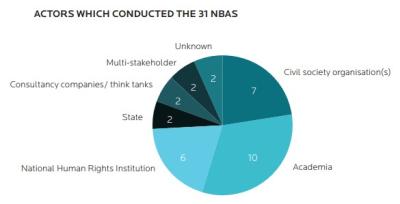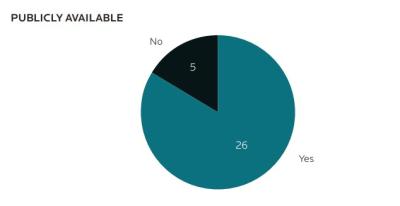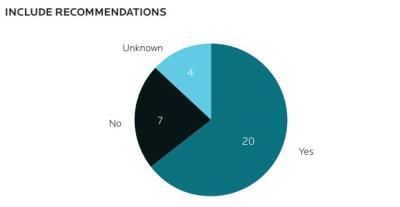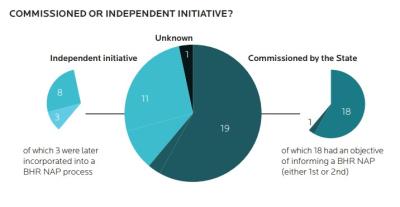Resources
States have an obligation to protect individuals and communities from actions or omissions by companies that might infringe upon their human rights.

Business and Human Rights
States have an obligation to protect individuals and communities from actions or omissions by companies that might infringe upon their human rights. Businesses can negatively impact on human rights in a variety of ways: at the workplace by e.g. not providing decent work conditions, in the community by e.g. polluting water sources posing a threat to lives and livelihoods, and in our private lives by e.g. collecting personal data without the consent of users.
The UN Guiding Principles on Business and Human Rights (UNGPs) are the first widely accepted international framework that explains the distinct responsibilities of States and businesses for business-related human rights impacts. The UNGPs were unanimously endorsed by the United Nations (UN) Human Rights Council in June 2011 and rest on the three complementary and interrelated pillars widely known as 'protect, respect and remedy’:
- The state duty to protect (Pillar 1) – meaning that states should take steps to protect against human rights abuses by third parties, including businesses, as an obligation under international law
- The corporate responsibility to respect (Pillar II) – meaning that businesses should respect human rights and conduct a process of human rights due diligence to prevent and address adverse human rights impacts as a soft law standard
- Access to remedy (Pillar III) – meaning that both states and businesses are expected to ensure access to effective remedy for victims of business-related human rights abuses.
Measuring business respect for human rights
This tool aims to support organizations to assess the implementation by the State of Pillar I and III of the UNGPs. However, for a comprehensive assessment of the implementation of the UNGPs, it is equally important to gauge the extent to which companies operating in a given country respect human rights and implement human rights due diligence as outlined in Pillar II of the UNGPs. This can be a challenging task for a number of reasons:
- Many companies, especially SMEs, do not publish or publish insufficient information to assess the quality of their human rights due diligence processes and many companies might be reluctant to engage with researchers on the topic
- Deciding the sample or universe of companies that should be included in such a study can be daunting given the sheer number and diversity of companies operating within a country
- A company may be headquartered in one country but may have most of its negative human rights impacts in its operations in other countries or in its multinational supply chain, making it difficult to provide a comprehensive assessment of its performance.
Below are presented two methodologies that have been used to gather data on business respect for human rights. The next challenge for this tool will be to integrate Pillar II data in scope.
Corporate Human Rights Benchmark
The Corporate Human Rights Benchmark (CHRB) is a methodology that benchmarks company policies and performance against the UNGPs Pillar II expectations and generates a company ranking. Now part of the World Benchmarking Alliance, the development of the CHRB was informed by DIHR’s Human Rights Indicators for Business and originally focused on benchmarking the largest multi-national companies from the apparel, agricultural products and extractives industry, but has since expanded to cover additional sectors. In 2020, the CHRB assessed 230 global companies across 5 sectors with a high risk of negative impacts.
The methodology primarily relies on an assessment of the public disclosure of human rights data by the respective companies. The full methodology covers over 80 indicators grouped in 6 measurement themes:
- governance and policies
- embedding respect and human rights due diligence
- remedies and grievance mechanism
- performance: company human rights practices
- performance: responses to serious allegations
- transparency
A shorter “snapshot” version of the CHRB includes a core indicators list (non-industry specific) with three themes: governance and policy commitments; embedding respect and human rights due diligence; remedies and grievance mechanism.
The snapshot version has been used by national stakeholders to benchmark some of the largest companies operating in their jurisdiction. National snapshots can provide useful insights about the degree of uptake of human rights due diligence by some of the largest national companies and create a momentum for improved corporate performance. Moreover, the results of snapshots can be used to advocate for policy and regulatory changes. For example, in Germany, the CHRB snapshot of the largest German companies clearly illustrated that companies were not sufficiently carrying out human rights due diligence, prompting the German government to start discussing legislation mandating human rights due diligence, which was eventually passed in 2021.
Examples of national snapshots:
- Australia (2017)
- Germany (2019)
- Denmark (2020)
- Finland (2020)
- Spain (2021)
- Belgium (2021) – see dedicated chapter on Pillar II in the National Baseline Assessment
Surveys for companies
Another approach to measuring the implementation of Pillar II has been through the development of bespoke surveys for businesses, usually within the scope of the elaboration of a National Baseline Assessment on business and human rights and the monitoring of the implementation of National Action Plans.
The surveys can generate data on the current level of understanding of human rights by businesses as well as their implementation of human rights due diligence. Some of the surveys that had been developed also included questions about needs and priorities where businesses could highlight areas where they required additional information and/or capacity building support.
The advantage of the survey approach is that questions can be tailored to the realities of each national context to ensure the collection of relevant and meaningful data. Moreover, the survey can also be a good modality to raise awareness of the UNGPs, especially in countries with a limited uptake of the business and human rights agenda. Different from benchmarks which aim to publicly rank companies, the analyses using surveys do not explicitly name companies but focus instead on highlighting broader trends and patterns.
Examples of assessment reports based on the data collected from company surveys:
- Scotland, Business and Human Rights NBA (2016)
- Ukraine, Business and Human Rights NBA. Executive summary (2019)
- Germany, Monitoring of the status of implementation of the human rights due diligence obligations of enterprises set out in the National Action Plan for Business and Human Rights (2016-2020)
DIHR Publication: "An overview of national baseline assessments on business and human rights" (2023)
This report is based on 31 national baseline assessments on business and human rights (NBAs) from 29 states, of which 25 are publicly available as of February 2023. Elements of this report are also based on interviews with key stakeholders.
The objective of this document is to provide an overview of NBAs conducted to date. In addition, it highlights key considerations and lessons learned relevant for actors planning to commission and/or conduct an NBA.




CORPORATE HUMAN RIGHTS BENCHMARK
- The benchmark usually focuses on the largest businesses in a country
- The benchmark methodology uses indicators directly informed by Pillar II of the UNGPs
- The benchmark relies on the self-reported company data that is available in the public domain
- The end result is a public ranking of companies, which can be a good tool to motivate businesses who are performing poorly to start improving
SURVEY
- The survey can have a wide reach
- The survey can be tailored to country realities and be used to generate data that goes beyond the expectations on human rights due diligence in Pillar II of the UNGPs
- The survey can generate new data that is not in the public domain
- The survey relies on data provided by respondents in companies
- The responses are typically anonymized and aggregated to capture trends and patterns, which does not expose individual businesses to scrutiny

